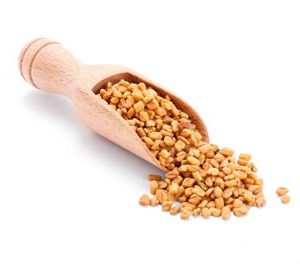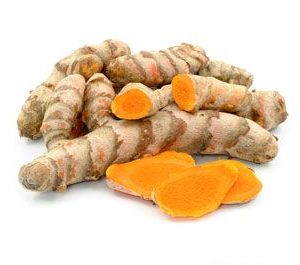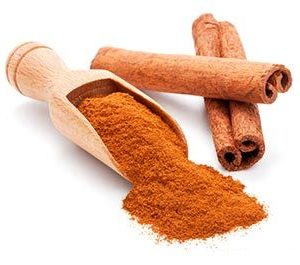Scallions can be sprinkled over soup, tossed into salads, fried with rice or added to sandwiches. They’re a versatile ingredient that you can use if you want to lend your dish a bit of onion flavor but without the pungency of regular red or yellow onions.
Asian and Mexican dishes wouldn’t taste the same without them. Read on to learn more about scallions, the proper way to cook them and how to grow them in your home.
What Are Scallions?
Also called Japanese bunching onions or Welsh onions, scallions (Allium fistulosum) are a member of the Allium family, along with garlic, onion and leeks. They’re characterized by their white base and long, tube-like leaves that are dark green in color. Unlike other alliums, scallions do not form a large bulb.
The flavor of scallions is both sweeter and milder compared to that of regular cooking onions. Medium-sized scallions are said to taste better than small- and large-sized ones. Their base also has more flavor than their stems, but both parts can be eaten raw or used as an ingredient or garnishing for many recipes.
Scallions are available year-round and sold in bunches. Keep in mind, though, that some regular onions can be sold as scallions if they’re harvested before their bulbs develop. The flavor of these “fake” scallions tend to taste stronger compare to the real deal, so you may want to watch out for them if you want to add just a subtle hint of onion flavor to your dish.
Scallions Versus Green Onions: Are They the Same?
The terms “scallion” and “green onion” are often used interchangeably. They may even be used to refer to other kinds of long, green and floppy Allium. However, there is actually no difference between scallions and green onions. Both of these terms are supposed to refer to the same plant, Allium fistulosum.
Scallions Versus Chives: Which Is Which?
Scallions and chives look similar, so they’re often confused for each other. However, chives are an entirely different plant. Scientifically known as Allium choenoprasum, chives have a pungent smell, but their flavor is less strong than scallions. These two types of Allium are often used as a substitute for each other.
Scallions Versus Shallots: What’s the Difference?
Shallots grow long green stalks that resemble scallions, so it’s not surprising that they’re often mistaken for the latter, especially if they’re picked very young. However, as shallots mature, it becomes more evident that they’re a different species of Allium altogether, since they grow bulbs. These bulbs look more like garlic than onion because they consist of cloves.
Health Benefits of Scallions
Besides spicing up your dishes, scallions can also provide a variety of health-boosting vitamins and minerals, including:
| Vitamin A — This vitamin is an antioxidant that helps fight against inflammation and damage caused by free radicals.
It also helps maintain proper immune system function, slow the aging process, promote healthy vision and skin, and improve bone health, among others. |
Vitamin C — A water-soluble vitamin that also acts as a powerful antioxidant, vitamin C helps improve heart health, boost immune system function, regulate blood sugar levels and fight viral illnesses.
It may also help decrease the risk for the common cold, cancer, osteoarthritis and age-related macular degeneration. |
| Vitamin K — It helps lower the risk for cardiovascular calcification, heart disease and stroke. Vitamin K plays an important role in blood clotting as well. | Folate — A B vitamin that plays an important role in the function of DNA and other genetic materials, folate may help reduce the risk of neural tube defects in babies, as well as preterm birth, cancer, heart disease and stroke. |
| Potassium — This mineral balances the electrical and chemical processes in your body, which in turn helps maintain proper muscle contractions, transmit nerve impulses, regulate blood sugar levels and improve blood pressure, among others. | Iron — It plays a role in the formation of hemoglobin, cell growth and differentiation, metabolism, endocrine and brain function, energy production, and immune health. |
In addition to the nutrients mentioned above, scallions are a good source of thiamin, riboflavin, magnesium, phosphorus, calcium and dietary fiber. They’re also traditionally used in the treatment of colds, influenza, abdominal pain, headache and heart disease.
Scallions Nutrition Facts
If you’re looking to add flavor to your dish without drastically increasing its calorie content, then you should go for scallions. One medium-sized scallion provides only 4.8 calories. It’s also low in sodium and cholesterol. To learn more about the nutritional value of this ingredient, check out the table below:
| Scallions Nutrition Facts
Serving Size 1 medium – 4 1/8″ long (15 g) |
||
| Amt. Per Serving |
% Daily Value* |
|
| Calories | 4.8 kcal | 0 % |
| Total Fat | 0 g | 0 % |
| Saturated Fat | 0 g | 0 % |
| Trans Fat | 0 g | |
| Cholesterol | 0 mg | 0 % |
| Sodium | 2.4 mg | 0 % |
| Carbohydrates | 1.1 g | 0 % |
| Dietary Fiber | 0.4 g | 2 % |
| Sugar | 0.5 g | |
| Protein | 0.3 g | 1 % |
| Vitamin A3% | Vitamin C | 5% |
| Calcium1% | Iron | 1% |
* Percent Daily Values are based on a 2,000 calorie diet. Your daily values may be higher or lower depending on your calorie needs.
Studies on Scallions
There have been several studies done on scallions to determine their benefits to human health. For instance, a 2018 study published in the journal BMC Complementary and Alternative Medicine evaluated the effects of scallion’s ethanolic and aqueous extract on body weight and obesity parameters.
The results of the study showed that oral administration of scallion extracts helped reduce body weight as well as liver and adipose tissue weight. It also helped improve serum lipid profiles, making it a beneficial food for weight management.
Another recent study published in the journal Nutrition Research and Practice evaluated the protective properties of the ethanol extract of Allium fistulosum against non-alcoholic fatty liver disease (NAFLD). Researchers found that scallion extract provides anti-lipogenic activity in the liver, making it useful for lowering the risk of NAFLD.
Scallion Substitutes That You Can Use
There are many other members of the Allium family that taste similar to scallions. If your recipe calls for scallions but you don’t have this ingredient at hand, try to substitute it with these members of the Allium family:
- Leeks — Leeks taste stronger and have a tougher texture than scallions, so they are best used for cooked dishes.
- Shallots — Shallots are ideal for cooked dishes, as their flavor can be very pungent when used raw.
- Ramps — Also known as wild leeks, ramps have a strong onion and garlic flavor that’s best for cooked dishes.
- Chives — As mentioned above, chives are often used as a substitute for scallions, as they both have a very mild flavor. Chives are great for both raw and cooked dishes.
How to Cut Scallions Properly
Cutting scallions is very easy task. You just have to prep them first by rinsing them and removing any wilted stalks. After rinsing, place the scallions on a cutting surface and then trim off their stringy root ends and the last 2 inches of their green tops. Cut them to the desired length.
The length of scallion slices depends on what type of dish they will be used for. Follow these guidelines to make sure you’re cutting scallions to the right length for your recipe:
- For garnishing, salads, salsas and other raw dishes, cut the scallions into 1/8-inch pieces.
- For stir-fried dishes, cut the scallions into 1-inch pieces.
- For recipes that call for bias-sliced pieces, cut the scallions at a 45-degree angle into 1/2- to 1-inch slices.
- For recipes that call for bite-sized strips, cut the scallions lengthwise before slicing them crosswise into 1- to 2-inch pieces.
Growing Scallions in Your Home
If you have leftover scallions in your kitchen, don’t throw them out. Instead, regrow them so you can have your own source of scallions at home. It’s not hard to regrow scallions, since they don’t even need to be planted into garden soil. As long as the scallions still have stems attached to the roots, you just have to place them in a glass of water and they’ll re-root in no time.
Choosing and Storing Scallions
Scallions are sold in bunches all year round. When choosing, avoid wilted and yellowing scallions, and look for those that still have firm white bases and stiff vibrant green ends. If your recipe calls for just a few pieces of scallions and you still have some leftovers that you’re not interested in regrowing, you can store them instead for later use. Simply rinse them well and pat them dry before wrapping them in a damp paper towel and storing them inside the refrigerator. They will stay fresh for up to three days.
Frequently Asked Questions (FAQs) About Scallions
- What’s the difference between scallions and spring onions?
- Scallions are called spring onions in Canada or United Kingdom. However, real spring onions are a different species from scallions. They grow small bulbs that are red or white in color as they mature. Their flavor is more intense than scallions, but sweeter and milder than regular onions.
- Can you eat scallion blossoms?
- Yes, the tiny white flowers of scallions are edible. They are best eaten raw in salads.







Reviews
There are no reviews yet.